Advertisements
Advertisements
प्रश्न
In the given figure PQ and PR are the two light rays emerging from an object P. The ray PQ is refracted as QS.
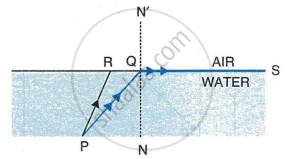
- State the special name given to the angle of incidence ∠PQN of the ray PQ.
- What is the angle of refraction for the refracted ray QS?
- Name the phenomenon that occurs if the angle of incidence ∠PQN is increased.
- The ray PR suffers partial reflection and refraction on the water-air surface. Give reason.
- Draw in the diagram the refracted ray for the incident ray PR and hence show the position of image of the object P by the letter P’ when seen vertically from above.
उत्तर
- ∠PQN Critical angle
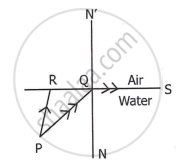
- Angle of refraction is 90°.
- The phenomenon is total internal reflection.
-
Because the ray PR's angle of incidence is smaller than ∠PQN (i.e., the critical angle), the ray PR experiences partial reflection and refraction on the water-air surface.
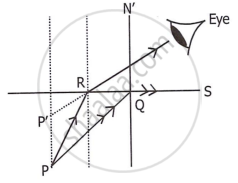
APPEARS IN
संबंधित प्रश्न
Which colour of light has a higher critical angle? Red light or green light.
Total internal reflection occurs only when a ray of light passes from a ______ medium to a ______ medium.
Calculate the speed of light in a medium whose critical angle is 30° ?
i) Observe the given figure and answer the following questions.
a) Identify and write the natural process shown in the figure.
b) List the phenomena which are observe in this process.
c) Redraw the diagram and show above phenomena in it.
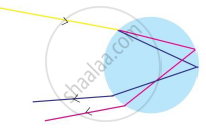
Can light be ‘piped’ like sound in a doctor’s stethoscope?
Name the factors affecting the critical angle for the pair of media.
A spherical marble, of refractive index 1.5 and curvature 1.5 cm, contains a tiny air bubble at its centre. Where will it appear when seen from outside?
Total internal reflection can take place only if light is travelling from ______.
A rectangular block of glass ABCD has a refractive index 1.6. A pin is placed midway on the face AB (Figure). When observed from the face AD, the pin shall ______.
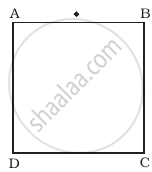
- appear to be near A.
- appear to be near D.
- appear to be at the centre of AD.
- not be seen at all.
State two differences between normal reflection and total internal reflection.
